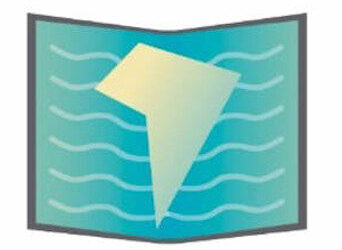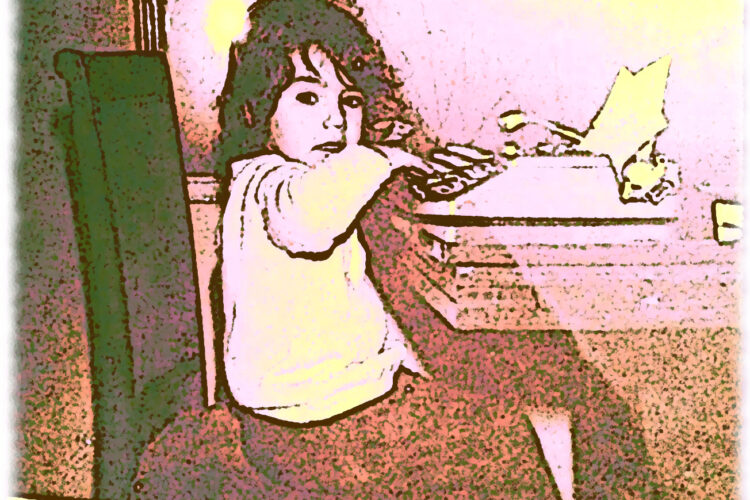Nuestras incursiones en el mundo digital nos han mostrado la inmensidad de transformaciones que ha vivido el mundo de la escritura en los últimos años, de abismante velocidad exponencial, seguramente ya habrá nuevos descubrimientos y aplicaciones al momento de publicar este artículo en pocos , minutos, ¿será que efectivamente la frecuencia vibratoria de nuestro planeta de agua aumenta y así también nuestra noción del tiempo?
Porque desde la invención de las primeras tablillas hace 5000 años, hasta la aparición de los pergaminos y el papel en el segundo siglo de la era crisitiana, pasan 3000 años, y recién en el 1800, después de 400 años de la invención de la imprenta, el lápiz reemplaza a la pluma. En esta misma época, en 1829, William Austin Burt patenta el tipógrafo, arcana versión de lo que luego serían las máquinas de escribir, sólo 44 años pasaron para que la empresa Remington lanzara una versión comercial de la máquina de escribir, aunque era muy grande y costosa, limitada a escribir sólo en mayúscula y sin que el escriba pudiera ver lo escrito. Sin embargo, a pesar de todas las dificultades, esta automatización ya encantaba a muchos, siendo Mark Twain uno de los primeros escritores en presentar sus obras, ya no manuscritas, sino mecanografiadas.
Pasaron 50 años más hasta lograr la versión moderna de nuestra antigua máquina, hace sólo un siglo; un poco antes, en 1910 ya aparecían las máquinas eléctricas, que fueron revolucionarias en términos de rapidez, precisión y diseño, ya podías seleccionar algunos tipos de letra y distinguir entre mayúsculas y minúsculas sin problema. No está demás aclarar que todos estos logros se deben al esfuerzo y curiosidad de muchas gentes, de distintos territorios y desde otros mares, aunque las patentes no siempre lo demuestren. Ya el invento de la imprenta había significado un salto cuántico en términos de difusión de ideas, construcción y acceso al conocimiento, pero, hay que reconocerlo, siempre quedaba la publicación en manos de una compañía o agente que no siempre compartía los criterios del escribiente, pero con estas maquinitas y los esténciles y los mimeógrafos y gelatinógrafos se abrió un mundo de publicaciones originales y experimentales realmente únicas.
Cualquiera que haya trabajado con manuscritos puede ver y apreciar el impacto y los beneficios de la máquina, se hace mucho más fácil la lectura y transcripción de documentos, los procesos comerciales e institucionales se agilizan y se abre un nuevo mercado laboral para las mujeres como mecanógrafas, en definitiva, fue aceptada rápidamente por les escritores y en el periodismo y el mundo de los negocios. Desde las primeras máquinas de escribir pasaron sólo 40 años para la aparición de los primeros procesadores de texto en 1964 con el Data Secretary de IBM que funcionaba con un pequeño procesador que sólo permitía guardar el documento por línea, sí, línea por línea, demoroso y engorroso. Pasaron menos de 20 años hasta que en 1982 Arthur C. Clarke cargó el programa WordStar en su computadora personal para escribir la secuela de su mítica novela de 1968, 2001, Odisea del Espacio.
Ahora publicar está a la distancia de un clic y siempre habrá quien quiera leer, comentar, corregir, aportar, criticar y sí, también trolear, sin embargo este auge tiene un matiz, ya que la tecnología sigue siendo cosa de la élite, si bien se considera que un 60% de la población es usuaria de Internet y un 67% de la población posee un dispositivo móvil, estos rangos varía según la región, siendo menor en las zonas pobres y rurales, donde tampoco abundan los papeles ni los lápices y donde la literatura crece al calor de un fogón, con telas e hilos que escriben textiles, bajo el arrullo de las voces femeninas que cuentan y cantan mientras cocinan y cuidan y crían nuestras tradiciones, ¿será que se escribe la oralitura?
Our incursions into the digital world have shown us the immensity of transformations that the world of writing has undergone in recent years, of abysmal exponential speed, surely there will already be new discoveries and applications at the time of publishing this article in a few minutes, could it be that the vibratory frequency of our water planet actually increases and so does our notion of time?
Because from the invention of the first tablets 5,000 years ago, until the appearance of parchment and paper in the second century of the Christian era, 3,000 years passed, and only in 1800, after 400 years of the invention of the printing press , the pencil replaces the feather. At this same time, in 1829, William Austin Burt patented the typographer, an arcane version of what would later be typewriters. Only 44 years passed for the Remington Company to launch a commercial version of the typewriter, although it was very large and expensive, limited to writing only in capital letters and without the scribe being able to see what was written. However, despite all the difficulties, this automation already enchanted many, Mark Twain was one of the first writers to present his works, no longer handwritten, but typed.
It took 50 more years to achieve the modern version of our old machine, only a century ago; a little earlier, in 1910 electric machines appeared, which were revolutionary in terms of speed, precision and design, you could already select some fonts and distinguish between capital letters and lowercase without problem. It is worth clarifying that all these achievements are due to the effort and curiosity of many people, from different territories and from other seas, although the patents do not always show it. The invention of the printing press had already meant a quantum leap in terms of dissemination of ideas, construction and access to knowledge, but, it must be recognized, the publication always remained in the hands of a company or agent that did not always share the writer’s criteria, but with these little machines and the stencils and the mimeographs and ectographers a world of really unique original and experimental publications opened up.
Anyone who has worked with manuscripts can see and appreciate the impact and benefits of the machine, it makes reading and transcription of documents much easier, business and institutional processes are streamlined and a new labor market is opened for women as typists, in short, was quickly accepted by writers and in journalism and the business world. Only 40 years passed from the first typewriters to the appearance of the first word processors in 1964 with the IBM Data Secretary that worked with a small processor that only allowed the document to be saved per line, yes, line by line, slow and cumbersome. Less than 20 years passed until in 1982 Arthur C. Clarke loaded the WordStar program on his personal computer to write the sequel to his legendary 1968 novel, 2001, A Space Odyssey.
Now publishing is just a click away and there will always be someone who wants to read, comment, correct, contribute, criticize and yes, also troll, however this boom has a nuance, since technology is still an elite thing, although It is considered that 60% of the population is an Internet user and 67% of the population has a mobile device, these ranges vary according to the region, being lower in poor and rural areas, where paper and pencils are not abundant either and where literature grows in the heat of a stove, with cloths and threads that write textiles, under the lullaby of female voices that count and chant while they cook and care and raise our traditions, could it be that oraliterature is written?








